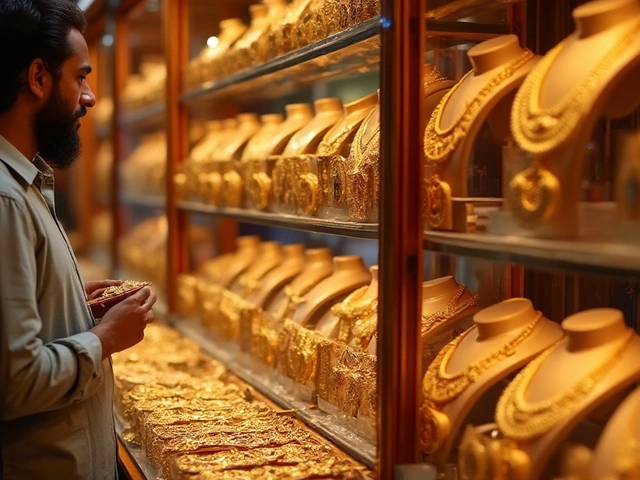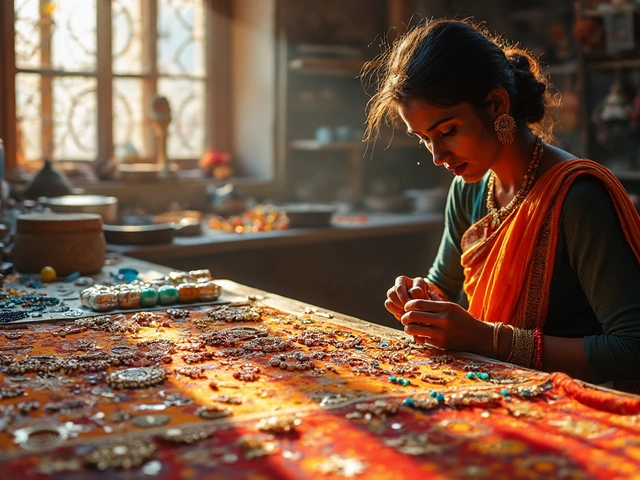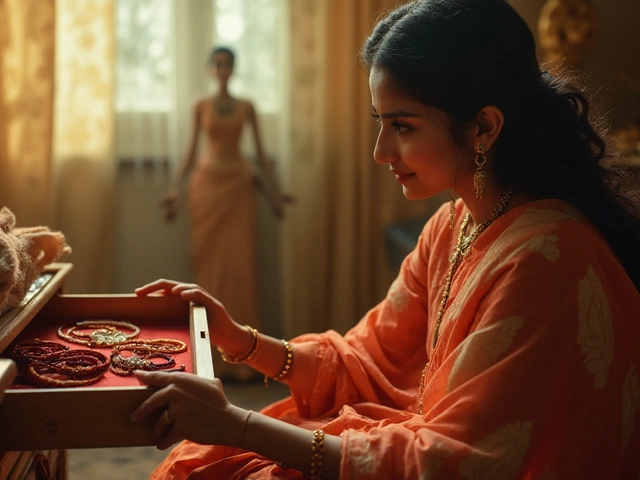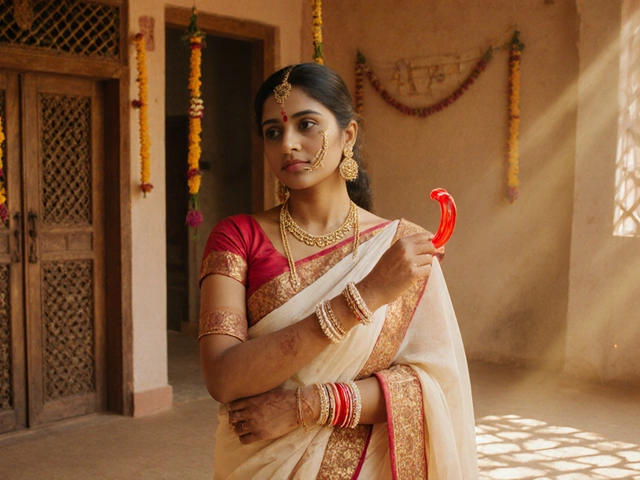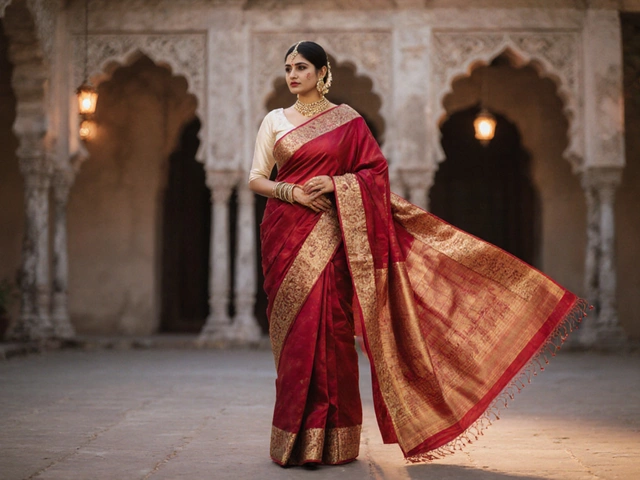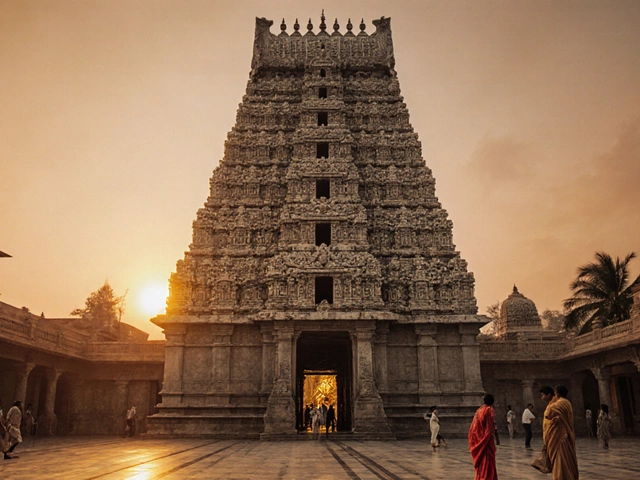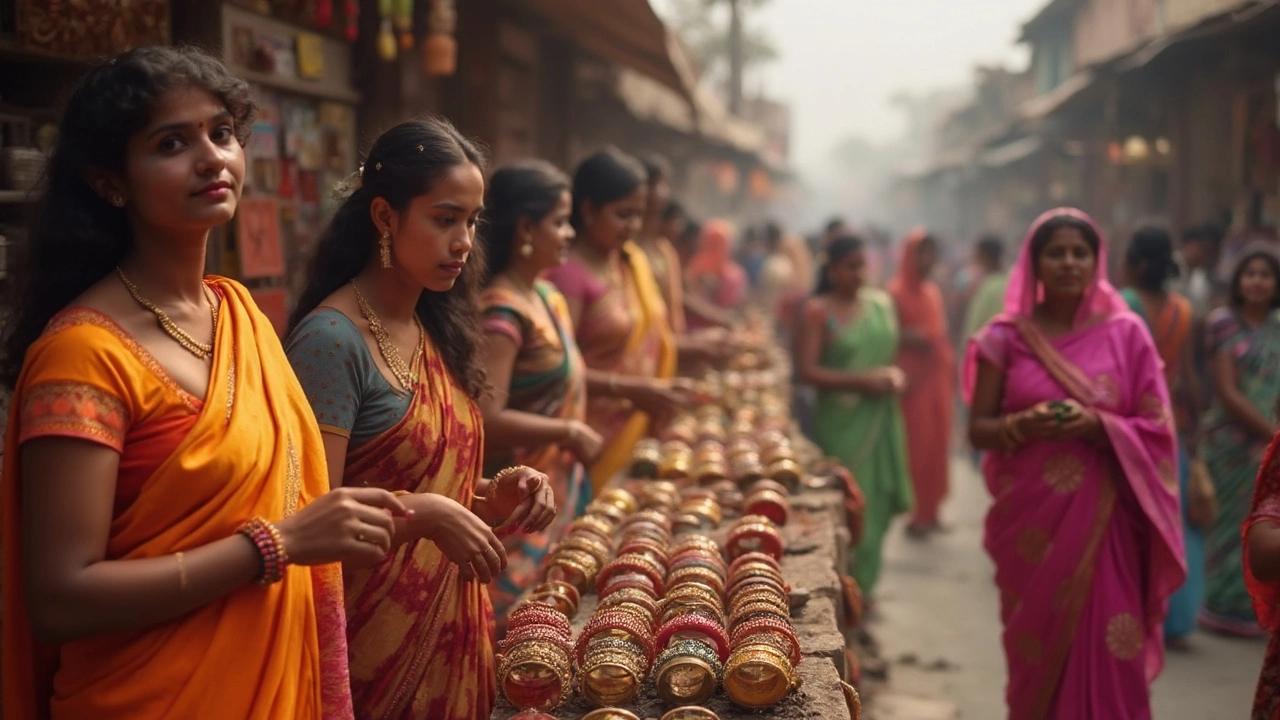
When it comes to traditional Indian bangles, size isn't just about comfort—it's about style, tradition, and sometimes even symbolism. So, how do you determine the normal bangle size for girls? Well, it’s more straightforward than you might think.
The standard bangle sizes for girls in India typically range from 2.2 inches to 2.8 inches in diameter. But, let's face it, everyone's different, right? So, before you shop, it's crucial to know your precise bangle size to avoid that awkward too-tight or too-loose fit.
Here's a quick tip: to get your accurate size, measure the circumference of your hand at the widest point with a tape measure. Then, match that measurement with standard bangle size charts available online or in-store. Doing this ensures the bangle slides on easily yet sits snugly enough not to slip off.
- Importance of Correct Bangle Sizing
- Standard Bangle Sizes for Girls
- Measuring Your Bangle Size
- Cultural Significance of Bangles
- Tips for Choosing the Right Bangle
- Common Mistakes in Bangle Sizing
Importance of Correct Bangle Sizing
Getting the bangle size right is not only a matter of comfort but also of aesthetic and cultural significance, especially when it comes to traditional Indian jewelry.
Why Size Matters
A bangle that's too tight can be uncomfortable and unflattering. It might restrict blood flow or cause irritation when worn for long periods. On the flip side, a bangle that's too loose can slip off unexpectedly, which isn’t just inconvenient but could lead to losing a cherished piece of jewelry.
Enhancing the Look
The right bangle size ensures that the jewelry sits perfectly on your wrist, complementing your outfit and enhancing the overall look. A snug fit reflects style confidence and shows your understanding of personal fashion.
Preserving Tradition
In India, bangles aren’t just accessories. They carry cultural and traditional values. Wearing them in the right size is a way to honor those traditions and show respect towards the customs associated with them. A perfectly fitting bangle represents the balance between personal flair and cultural heritage.
Health and Safety
Ill-fitting bangles can pose a health risk, especially for people with sensitive skin. A tight bangle might lead to skin allergies or irritations, while a loose one could catch onto something and cause injury.
In conclusion, choosing the right bangle size isn't a trivial task. It involves considering your comfort, styling preference, and cultural values. Investing a few minutes to measure your wrist or consulting a size chart can make all the difference in how you feel and look.
| Hand Circumference | Bangle Size (Diameter) |
|---|---|
| 6.5 inches | 2.4 inches |
| 6.8 inches | 2.6 inches |
Standard Bangle Sizes for Girls
So, you're on the hunt for the perfect bangle size? Good on you for giving it some thought! Let's break it down so you can find the ideal fit without the hassle. In India, bangle sizes usually come measured in inches, and there are some pretty common sizes you’ll see around.
Most traditional bangles for girls start at about 2.2 inches, known as the '2-2' size. This can go up, moving through sizes like '2-4', '2-6', and all the way up to about 2.8 inches. If this feels a bit like learning shoe sizes, you're not far off!
How to Interpret Bangle Sizes
The numbers might look confusing at first, but they're actually quite logical. The first number is always a 2, and the second number just increases in increments of two to denote a slightly larger diameter.
- 2-2 inches: Typically for younger girls
- 2-4 inches: Fits teenagers and slim wrists
- 2-6 inches: The most common size, fits average wrists
- 2-8 inches: For fuller wrists
It might be tempting to buy those gorgeous bangles without thinking about size, but trust me, that perfect fit is worth a little extra effort. After all, no one wants a beautiful bangle that’s impossible to wear comfortably, right?
To help give you a quick glimpse into the range of sizes, here's a handy table:
| Bangle Size | Inches | Typical Wearer |
|---|---|---|
| 2-2 | 2.2 inches | Young Girls |
| 2-4 | 2.4 inches | Teenagers |
| 2-6 | 2.6 inches | Most Common |
| 2-8 | 2.8 inches | Adults with Fuller Wrists |
Precision in picking your Indian jewelry is the way to go if you want to look stylish and feel comfortable. So measure up and go find those bangles that not only look stunning but fit like a dream!
Measuring Your Bangle Size
If you're diving into the world of traditional Indian bangles, measuring your bangle size is a must-do step. Getting it right means you’ll have bangles that fit comfortably and look just right without the fear of them falling off or being too tight.
What You Need
You don't need any fancy tools to figure out your bangle size. Just grab a tape measure or a piece of string, and a ruler if you prefer. You can also use an existing bangle that fits well.
Steps to Measure
- Start by tucking your thumb into the palm of your hand, making your hand as narrow as possible.
- Using the tape measure or string, wrap it around the widest part of your hand. This is usually where a bangle would slip over.
- If using a string, mark or cut it where it meets the start, then measure its length with a ruler.
- Take this measurement and compare it to standard bangle charts. The most common sizes are usually between 2.4 inches (5.8 cm) to 2.8 inches (7.1 cm).
It's a straightforward process, but accuracy matters. Measure more than once to be sure and always round up if you find yourself between sizes. This will help in ensuring the bangle comfortably slides over your hand.
More Tips
If in doubt, consult professionals in a jewelry store. They'll likely have sample bangles in various sizes you can test out. Also, pay attention to regional size variations if you're shopping in different parts of India, as they may differ slightly.
Having the right bangle size ensures not just comfort but also highlights the beauty of these traditional accessories, letting you wear them with pride and confidence.
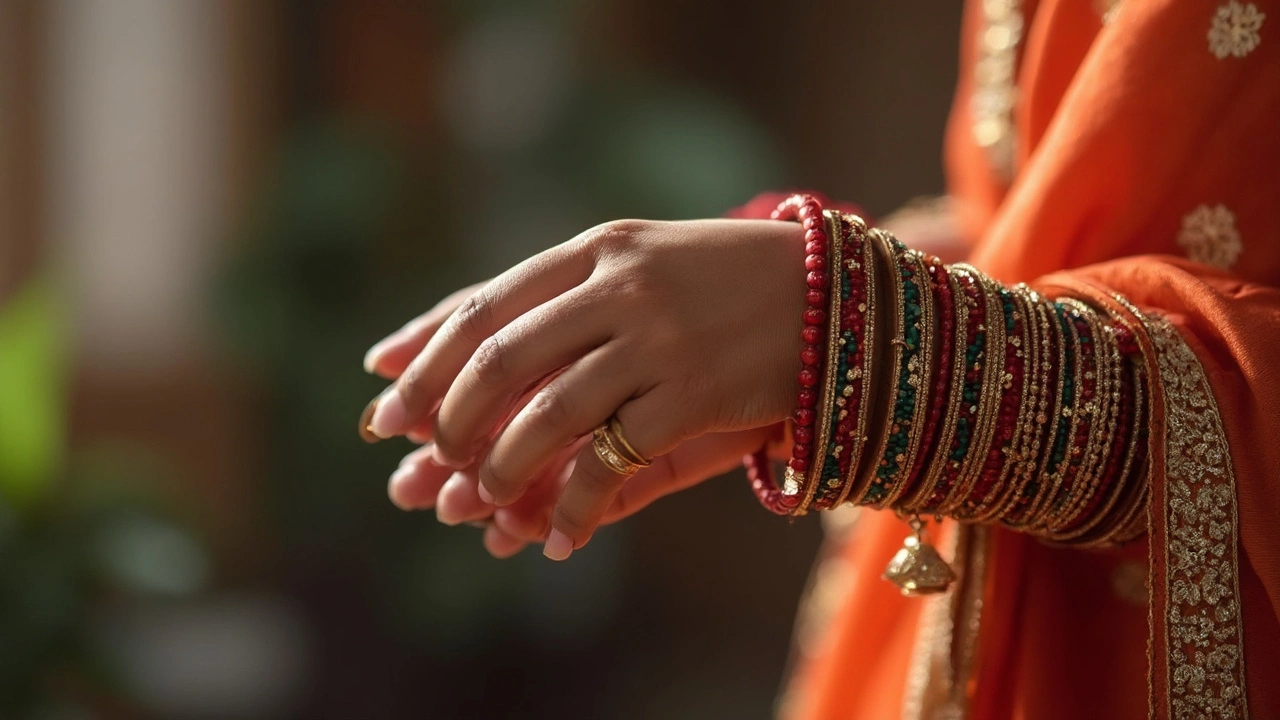
Cultural Significance of Bangles
In India, bangles are more than just pretty pieces of Indian jewelry; they hold a deep cultural and symbolic significance. Worn as a part of daily life, especially by married women, they are considered symbols of prosperity, happiness, and the sanctity of marriage.
Traditional Beliefs
Different regions have their spins on bangle traditions. In Bengali culture, for example, newlywed women wear a pair of red and white bangles known as 'Shakha Pola,' symbolizing their transition into married life. Similarly, in Punjabi weddings, brides don colorful bangles called 'Chura,' which are believed to bring good luck to the couple.
In some parts of India, the sound of bangles clinking together is seen as an omen of good fortune. For centuries, this has added to the charm and aesthetic of Indian weddings and festivities.
Colors and Materials
Colors and materials of a bangle also hold deeper meanings. Red stands for energy and prosperity, green signifies good fortune and fertility, while gold embodies wealth and strength. Traditional bangles are crafted from various materials including glass, metal, and gold, each carrying its own cultural weight.
| Color | Meaning |
|---|---|
| Red | Energy, Prosperity |
| Green | Good Fortune, Fertility |
| Gold | Wealth, Strength |
While most people appreciate them for their stunning beauty, it's these cultural nuances that make traditional bangles even more special. So next time you slip a bangle onto your wrist, remember you're carrying a piece of history and tradition with you.
Tips for Choosing the Right Bangle
Picking the perfect bangle isn't just about sizing; it's about style and what feels right for you. Here are some practical pointers to help you make the best choice when diving into the world of traditional bangles.
1. Know Your Size
This is fundamental. Measuring your hand as we mentioned earlier is key. Grab a flexible measuring tape or even a soft string, wrap it around the widest part of your hand, and make sure it's not too tight. Note this down and compare it with the sizing guide. This will ensure your bangles fit just right without cutting off circulation or slipping off.
2. Consider the Occasion
The occasion often dictates the type of bangle you should wear. For weddings or festivals, go for intricate designs with a bit of bling. For everyday wear, keep it simple and elegant. Think about what matches your outfit and the mood of the event.
3. Material Matters
Bangles come in a variety of materials. Indian jewelry can be crafted from gold, silver, glass, or even plastic. Each material has its charm and practicality. Gold and silver are timeless and classy but glass bangles give you that classic jingle and vibrant look. Consider your lifestyle and budget when choosing.
4. Mix and Match
Who says you can only wear one type of bangle? Mixing metals and styles can give you a unique look. Layering a couple of thinner bangles with a thicker one can add a modern twist to your traditional look. Be bold and experiment!
5. Check for Allergies
Some materials can cause skin reactions. If you've got sensitive skin, opt for bangles that are nickel-free or coated with hypoallergenic material. Always try before you buy to avoid any surprises later on.
Bonus Tip: Safety First
If you have little ones around, consider the durability of your bangles. Glass bangles are beautiful but can break easily, posing a risk of cuts. For a more child-friendly option, go with robust materials like metal or plastic.
Common Mistakes in Bangle Sizing
Getting the bangle size wrong can be a real headache. Whether it's too tight or too loose, either way, you're not doing justice to your style or comfort. Here are some common slip-ups people make when picking out their traditional bangles and how you can avoid them.
Ignoring the Right Measurement Techniques
One of the biggest mistakes is not measuring your hand correctly. Just guessing your size isn't enough. You should measure the widest part of your hand—the area just below the knuckles—using a flexible measuring tape. If you skip this step, you're likely to end up with a bangle that either won't go past your knuckles or easily slides off your wrist.
Not Accounting for Bangle Width
Another common oversight is not considering how the width of the bangle affects its fit. Thicker bangles take up more space, so if you're planning on stacking them, factor in this extra room. A lot of folks only focus on the diameter and forget about this, which can lead to a tight fit.
Replacing Actual Measurements with Rough Estimates
Some rely on estimates instead of actual measurements. They might use their mother's or sister's size as a reference, assuming it'll be the same. Remember, everyone's hand size can differ, even among family members. Always get the exact measurement for the best fit.
Overlooking Material Flexibility
Materials like glass or metal don't offer much stretch, so the sizing needs to be exact. Overlook this, and you might end up with a beautiful set of bangles that you simply can't wear. This isn't as critical with flexible materials, but for rigid ones, it's a no-go.
The "One Size Fits All" Trap
Trusting that one-size-fits-all slogan is another misstep. This approach rarely works, given the diversity in hand sizes. Customized bangle sizing options are often available, and taking advantage of them ensures a fit tailored to your needs.
Keeping these pitfalls in mind can save you time, money, and frustration. A little attention to detail helps ensure you get that perfect set of bangles that truly fits your style and comfort.

